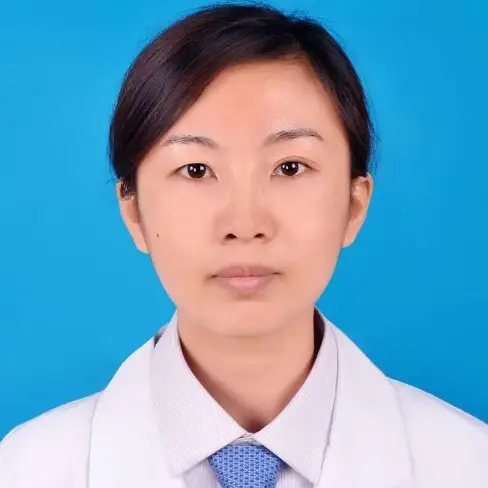
【摘要】 由于存在多种致病因素,大肠腺瘤性息肉经肠镜摘除术后容易复发,特别是多发性腺瘤患者。临床上筛查和预防大肠腺瘤性息肉复发的方法有以下几种: ①定期肠镜检查;②主动避免高危因素;③大便隐血试验;④大肠腺瘤风险评分;⑤中医药干预。每一种方法各有优缺点,不同患者根据自己的情况,选择合适自己的方法进行筛查预防。如发现有大肠腺瘤,建议摘除腺瘤后中药干预1-2个月。

1、定期肠镜检查
一般而言, 一次肠镜检查能确保4-5年大肠的安全。大肠多发腺瘤(含息肉,下同)术后第一年复发率在40%,第五年复发率可达80%以上。医院的等级、医生的职称、年龄、医生手术的状态均有可能增加一次肠镜检查腺瘤的漏诊率。如果同时导致患者大腺瘤增生的影响因素没有排除明显,大肠腺瘤内镜下摘除术后复发的可能性就非常高。大部分人不可能频繁每年做肠镜检查,特别是很多老年人合并糖尿病,高血压,心脏病,慢性支气管炎等老年病。因此定期肠镜检查只适合很少一部分人群,对大部分人群来说,有必要用一些简便的方法进行预防筛查,避免频繁肠镜检查,有比较简单的手段和指标来减少和延长复查间隔时间。
2、主动避免高危因素
中医理论提倡治未病,即未病先防,既病防变。这种治疗防治思维特别适合大肠癌的早期预防干预。因为肠息肉到癌变需要6-10年的演变过程,有足够时间进行检查预防和干预治疗。受各种因素的长期影响,肠息肉演变成上皮内瘤变。而在肠镜摘除腺瘤术后,这些致病因素并没有祛除。在中医认为,这就是脏腑阴阳气血失调的表现。通过中医调理阴阳失衡,纠正气血不足,达到阴平阳秘的最佳状态。大多数肠腺瘤患者,有明显的阴阳失衡,气血紊乱,水火失调,这时候用中医来调理干预,效果应该会很好。对多数患者而言,中医调理只需要1、2个月就基本可以了。中医认为肠腺瘤的基本病理为脾肾虚亏,气血不足,兼夹湿毒瘀。脾肾两虚是决定结直肠腺瘤性息肉复发的最主要因素,贯穿于结直肠腺瘤发展的始终。有作者提出基于结直肠腺瘤性息肉的病因病机,选择以健脾扶正为主、燥湿化瘀为辅的中医治疗方案,尤其是对于先天不足、素体虚弱及术后气血亏虚、正虚邪恋者,可以起到明显的疗效,缓解和减少其癌变程度或速度。健脾祛湿、活血解毒中药可通过 Wnt /β - catenin 信号通路抑制肿瘤细胞的生长或转移,起到抗肿瘤作用。陈氏观察到健脾理肠汤可有效改善患者临床症状,降低腺瘤性大肠息肉术后复发率。健脾化瘀汤可降低大肠腺瘤切除术后的复发率,其作用机制可能与下调 COX-2、Ki67 表达有关。
综合文献报道,中药干预大肠腺瘤摘除术后的复发疗效,可以减少50-70%以上的瘤性息肉复发。这对于单发或多发腺瘤患者来说非常满意了。一般人群可以采取以下思路进行大肠腺瘤的早期筛查和预防。首先选择前面五种方法的1-2种,如提示为大肠腺瘤高风险人群,选择肠镜检查,如发现有大肠腺瘤,内镜下进行摘除术,术后用中药干预1-2个月,预防腺瘤术后复发。有肠道症状者建议适当延长用药时间。


大肠腺瘤是一个什么样的疾病我们大家并不清楚,对于这样的疾病我们很多的人都想要去了解,对于一个陌生的疾病我们只有了解更多我们的心里才会有底,所以很多的人都迫切的想要知道大肠腺瘤西医治疗方法是什么?
大肠腺瘤属癌前病变,一经发现均应及时处理。多数腺瘤可通过镜下切除,肠镜无法切除时(多数为直径大于2cm的绒毛状广基腺瘤)则应手术切除。对于术后病检无癌变者无须进一步治疗;有癌变者应根据浸润深度选择不同的治疗方式。
1.镜下切除 镜下切除的方法有圈套凝切法、活检钳凝切法、电凝器灼除法等。对于有蒂型腺瘤可行圈套切除,对于小于0.5cm的广基型腺瘤可采用活检钳凝切法或电凝器灼除法,0.5~1cm的广基型可采用圈套凝切法进行切除。
2.手术切除 对于直径大于2cm的绒毛状广基腺瘤不宜经肠镜分块切除,而应采用手术切除,一般按大肠癌手术处理原则进行。
3.腺瘤癌变的处理
(1)癌局限于黏膜层者,采用局部切除术,术后肠镜随访。
(2)癌变侵入黏膜下层而未达固有肌层者,我国通常根据腺瘤病理类型决定手术方式。
①管状腺瘤:如果切缘无癌,或切片中无血管和淋巴管受累,或癌细胞分化好,或病理学检查证实腺瘤完全切除,一般只需局部切除加密切随访即可。
②绒毛状腺瘤:由于其淋巴结转移的可能性高达29%~44%,因此应按通常的大肠癌作包括淋巴结清除的肠切除术。
③混合性腺瘤:如为有蒂型,其处理原则与管状腺瘤癌变限于黏膜下层时相同,如为广基型,则与绒毛状腺瘤癌变限于黏膜下层时的处理原则相同。
(3)腺瘤癌变浸润至肌层者,行根治性肠切除术。
以上就是关于大肠腺瘤西医治疗方法是什么的介绍,我们在生活中已经很了解西医了,有的人认为中医好有的人认为是西医好,很多的人都不知道这两个每个都有自己的好处,所以治疗疾病最好是中西医结合。

大肠肿瘤及癌证的发病原因为忧思内疚使肺魄失于宽展而导致阳明血气循结于大肠,长期不解而发生。肺主忧魄,其动为振,其作为裂,其主秋季气象雾露,肺魄失于宽展颜乐则振动不可开拓无能。中医名为大肠忧瘤,其忧自外来气结为肿,忧自内生血结为瘤,内忧外患卫气营魄热结为癌。
大肠忧瘤的上述病理以简明白话俗语比喻即是“肛忧柴火”魄气忧郁寒热下变如同人们事业缺乏新的开拓而在囿居旧循之中“薪水不足”的生活情况。
大肠忧瘤健康愈复食疗宜用羊肉、苦瓜、菜瓜、蒜苗、山药、麦粒蒸厨多食用蔬菜,少量食用生鲜蔬菜。
健康导引宜用健身舞、健身操、五禽戏、十二生肖健身戏、咏春拳的坚持不懈锻炼。勤备柴薪,使用竹椅草席以及勤劳自新洁净俭省储备的生活习惯形成为特点的自我愈复活动及个人明新起居修养。

腺瘤是常见的一种良性肿瘤,可以发生于甲状腺的腺体之内或者是发生于肠道,主要病人也会出现疼痛或者是肠道的刺激症状,包括腹胀,甚至也会出现排便异常或者排便带血的表现。
良性病变通常不严重,但是确实之后,也应该进行医学治疗。对于发生于甲状腺腺体内的腺瘤,可以选择局部麻醉下进行手术切除。
而发生于肠道的病变,如果是单纯比较小的腺瘤,可以经结肠镜下进行切除或者活检;肿瘤比较大,如果活检提示是癌,不适合进行镜下切除,可以选择传统的开放手术,或者是腹腔镜下的肠管部分切除手术,并且术后也需要配合抗癌治疗。
而腺瘤是非常常见的一种良性疾病,相对不严重,所以确诊之后也不要过分的担心,只要及时有效治疗,还是比较满意的。

以下内容来源于新英格兰医学杂志。
Presentation of Case

Differential Diagnosis
Movement Disorders
Seizures
Functional Movement Disorder
Dyskinesia
Limb-Shaking TIAs
Clinical Impression and Initial Management

Clinical Diagnosis
Dr. Albert Y. Hung’s Diagnosis
Pathological Discussion

Pathological Diagnosis
Additional Management
Final Diagnosis

以下内容来源于新英格兰医学杂志。
Presentation of Case
Dr. Christine M. Parsons (Medicine): A 75-year-old woman was evaluated at this hospital because of arthritis, abdominal pain, edema, malaise, and fever.
Three weeks before the current admission, the patient noticed waxing and waning “throbbing” pain in the right upper abdomen, which she rated at 9 (on a scale of 0 to 10, with 10 indicating the most severe pain) at its maximal intensity. The pain was associated with nausea and fever with a temperature of up to 39.0°C. Pain worsened after food consumption and was relieved with acetaminophen. During the 3 weeks before the current admission, edema developed in both legs; it had started at the ankles and gradually progressed upward to the hips. When the edema began to affect her ambulation, she presented to the emergency department of this hospital.
A review of systems that was obtained from the patient and her family was notable for intermittent fever, abdominal bloating, anorexia, and fatigue that had progressed during the previous 3 weeks. The patient reported new orthopnea and nonproductive cough. Approximately 4 weeks earlier, she had had diarrhea for several days. During the 6 weeks before the current admission, the patient had lost 9 kg unintentionally; she also had had pain in the wrists and hands, 3 days of burning and dryness of the eyes, and diffuse myalgias. She had not had night sweats, dry mouth, jaw claudication, vision changes, urinary symptoms, or oral, nasal, or genital ulcers.
The patient’s medical history was notable for multiple myeloma (for which treatment with thalidomide and melphalan had been initiated 2 years earlier and was stopped approximately 1 year before the current admission); hypothyroidism; chikungunya virus infection (diagnosed 7 years earlier); seropositive erosive rheumatoid arthritis affecting the hands, wrists, elbows, and shoulders (diagnosed 3 years earlier); vitiligo; and osteoarthritis of the right hip, for which she had undergone arthroplasty. Evidence of gastritis was reportedly seen on endoscopy that had been performed 6 months earlier. Medications included daily treatment with levothyroxine and acetaminophen and pipazethate hydrochloride as needed for cough. The patient consumed chamomile and horsetail herbal teas. She had no known allergies to medications, but she had been advised not to take nonsteroidal antiinflammatory drugs after her diagnosis of multiple myeloma.
Approximately 5 months before the current admission, the patient had emigrated from Central America. She lived with her daughter and grandchildren in an urban area of New England. She had previously worked in health care. She had no history of alcohol, tobacco, or other substance use. There was no family history of cancer or autoimmune, renal, gastrointestinal, pulmonary, or cardiac disease.
On examination, the temporal temperature was 37.1°C, the heart rate 106 beats per minute, the blood pressure 152/67 mm Hg, and the oxygen saturation 100% while the patient was breathing ambient air. She had a frail appearance and bitemporal cachexia. The weight was 41 kg and the body-mass index (the weight in kilograms divided by the square of the height in meters) 15.2. Her dentition was poor; most of the teeth were missing, caries were present in the remaining teeth, and the mucous membranes were dry. She had abdominal tenderness on the right side and mild abdominal distention, without organomegaly or guarding. Bilateral axillary lymphadenopathy was palpable. Infrequent inspiratory wheezing was noted.
The patient had swan-neck deformity, boutonnière deformity, ulnar deviation, and distal hyperextensibility of the thumbs (Fig. 1). Subcutaneous nodules were observed on the proximal interphalangeal joints of the second and third fingers of the right hand and on the proximal interphalangeal joint of the fourth finger of the left hand. Synovial thickening of the metacarpophalangeal joints of the second fingers was noted. There was mild swelling and tenderness of the wrists. She had pain with flexion of the shoulders and right hip, and there was subtle swelling of the shoulders and right knee. Pitting edema (3+) and vitiligo were noted on the legs. No sclerodactyly, digital pitting, telangiectasias, appreciable calcinosis, nodules, nail changes (including pitting), or tophi were present. The remainder of the examination was normal.

The blood levels of glucose, alanine aminotransferase, aspartate aminotransferase, bilirubin, globulin, lactate, lipase, magnesium, and phosphorus were normal, as were the prothrombin time and international normalized ratio; other laboratory test results are shown in Table 1. Urinalysis showed 3+ protein and 3+ blood, and microscopic examination of the sediment revealed 5 to 10 red cells per high-power field and granular casts. Urine and blood were obtained for culture. An electrocardiogram met (at a borderline level) the voltage criteria for left ventricular hypertrophy.

Dr. Rene Balza Romero: Computed tomography (CT) of the chest, abdomen, and pelvis, performed after the intravenous administration of contrast material, revealed scattered subcentimeter pulmonary nodules (including clusters in the right middle lobe and patchy and ground-glass opacities in the left upper lobe), trace pleural effusion in the left lung, coronary and valvular calcifications, and trace pericardial effusion, ascites, and anasarca. The scans also showed slight enlargement of the axillary lymph nodes (up to 11 mm in the short axis) bilaterally and a chronic-appearing compression fracture involving the T12 vertebral body.
Dr. Parsons: Morphine and lactated Ringer’s solution were administered intravenously. On the second day in the emergency department (also referred to as hospital day 2), the blood levels of haptoglobin, folate, and vitamin B12 were normal; other laboratory test results are shown in Table 1. A rapid antigen test for malaria was positive. Wright–Giemsa staining of thick and thin peripheral-blood smears was negative for parasites; the smears also showed Döhle bodies and basophilic stippling. Antigliadin antibodies and anti–tissue transglutaminase antibodies were not detected. Tests for hepatitis A IgG and hepatitis C antibodies were positive. Tests for hepatitis B core and surface antibodies were negative. A test for human immunodeficiency virus type 1 (HIV-1) and type 2 (HIV-2) was negative.
Findings on abdominal ultrasound imaging performed on the second day (Fig. 2A and 2B) were notable for a small volume of ascites and kidneys with echogenic parenchyma. Ultrasonography of the legs showed no deep venous thrombosis. An echocardiogram showed normal ventricular size and function, aortic sclerosis with mild aortic insufficiency, moderate tricuspid regurgitation, a right ventricular systolic pressure of 39 mm Hg, and a small circumferential pericardial effusion. Intravenous hydromorphone was administered, and the patient was admitted to the hospital.

On the third day (also referred to as hospital day 3), nucleic acid testing for cytomegalovirus, Epstein–Barr virus, and hepatitis C virus was negative, and a stool antigen test for Helicobacter pylori was negative. An interferon-γ release assay for Mycobacterium tuberculosis was also negative. Oral acetaminophen and ivermectin and intravenous hydromorphone and furosemide were administered.
Dr. Balza Romero: Radiographs of the hands (Fig. 2C through 2F) showed joint-space narrowing of both radiocarpal joints and proximal interphalangeal erosions involving both hands. Radiographs of the shoulders showed arthritis of the glenohumeral joint and alignment suggestive of a tear of the right rotator cuff. A radiograph of the pelvis showed diffuse joint-space narrowing of the left hip, without osteophytosis, and an intact right hip prosthesis.
Dr. Parsons: Diagnostic tests were performed, and management decisions were made.
Differential Diagnosis
Cancer
Infectious Disease
Autoimmune Disease
Hypocomplementemia
Dr. Beth L. Jonas’s Diagnosis
Pathological Discussion
Pathological Diagnosis
Discussion of Management
Follow-up
Final Diagnosis
Overlap syndrome of rheumatoid arthritis and systemic lupus erythematosus complicated by proliferative lupus nephritis, superimposed on amyloid A amyloidosis.

以下内容来源于PubMed。
Abstract
Sacituzumab govitecan (SG) significantly improved progression-free survival (PFS) and overall survival (OS) versus chemotherapy in hormone receptor-positive human epidermal growth factor receptor 2-negative (HR+HER2-) metastatic breast cancer (mBC) in the global TROPiCS-02 study. TROPiCS-02 enrolled few Asian patients. Here we report results of SG in Asian patients with HR+HER2- mBC from the EVER-132-002 study. Patients were randomized to SG (n = 166) or chemotherapy (n = 165). The primary endpoint was met: PFS was improved with SG versus chemotherapy (hazard ratio of 0.67, 95% confidence interval 0.52-0.87; P = 0.0028; median 4.3 versus 4.2 months). OS also improved with SG versus chemotherapy (hazard ratio of 0.64, 95% confidence interval 0.47-0.88; P = 0.0061; median 21.0 versus 15.3 months). The most common grade ≥3 treatment-emergent adverse events were neutropenia, leukopenia and anemia. SG demonstrated significant and clinically meaningful improvement in PFS and OS versus chemotherapy, with a manageable safety profile consistent with prior studies. SG represents a promising treatment option for Asian patients with HR+HER2- mBC (ClinicalTrials.gov identifier no. NCT04639986 ).

以下内容来源于PubMed。
Abstract
Irritable bowel syndrome with diarrhea (IBS-D) is a common and chronic gastrointestinal disorder that is characterized by abdominal discomfort and occasional diarrhea. The pathogenesis of IBS-D is thought to be related to a combination of factors, including psychological stress, abnormal muscle contractions, and inflammation and disorder of the gut microbiome. However, there is still a lack of comprehensive analysis of the logical regulatory correlation among these factors. In this study, we found that stress induced hyperproduction of xanthine and altered the abundance and metabolic characteristics of Lactobacillus murinus in the gut. Lactobacillus murinus-derived spermidine suppressed the basal expression of type I interferon (IFN)-α in plasmacytoid dendritic cells by inhibiting the K63-linked polyubiquitination of TRAF3. The reduction in IFN-α unrestricted the contractile function of colonic smooth muscle cells, resulting in an increase in bowel movement. Our findings provided a theoretical basis for the pathological mechanism of, and new drug targets for, stress-exposed IBS-D.
Keywords: AdorA2B; Lactobacillus murinus; irritable bowel syndrome with diarrhea; spermidine; stress; type I interferon; xanthine.

以下内容来源于PubMed。
Abstract
The severe bronchiolitis endotype characterized by a high abundance of H. influenzae, high proportion of RV-A and RV-C infections, and high asthma genetic risk had a significantly higher risk for developing asthma.
Background: Infants with bronchiolitis are at increased risk for developing asthma. Growing evidence suggests bronchiolitis is a heterogeneous condition. However, little is known about its biologically distinct subgroups based on the integrated metagenome and asthma genetic risk signature and their longitudinal relationships with asthma development.
Methods: In a multi-center prospective cohort study of infants with severe bronchiolitis (i.e., bronchiolitis requiring hospitalization), we profiled nasopharyngeal airway metagenome and virus at hospitalization, and calculated the polygenic risk score of asthma. Using similarity network fusion clustering approach, we identified integrated metagenome-asthma genetic risk endotypes. We also examined their longitudinal association with the risk of developing asthma by age six years.
Results: Of 450 infants with bronchiolitis (median age, 3 months), we identified five distinct endotypes-characterized by their nasopharyngeal metagenome, virus, and asthma genetic risk profiles. Compared with endotype A infants (who clinically resembled "classic" bronchiolitis), endotype E infants (characterized by a high abundance of H. influenzae, high proportion of RV-A and RV-C infections, and high asthma genetic risk) had a significantly higher risk for developing asthma (35.9% versus 16.7%; ORadj, 2.24; 95%CI, 1.02-4.97; p=0.046). The pathway analysis showed that endotype E had enriched microbial pathways (e.g., glycolysis, L-lysine, arginine metabolism) and host pathways (e.g., IFNs, IL-6/JAK/STAT3, fatty acids, MHC, and immunoglobin-related) (FDR<0.05). Additionally, endotype E had a significantly higher proportion of neutrophils (FDR<0.05).
Conclusion: In this multi-center prospective cohort study of infant bronchiolitis, the clustering analysis of integrated-omics data identified biologically distinct endotypes with differential risks for developing asthma.

以下内容来源于PubMed。
Summary
Background
Methods
Findings
Interpretation
Funding
Keywords
展开更多















